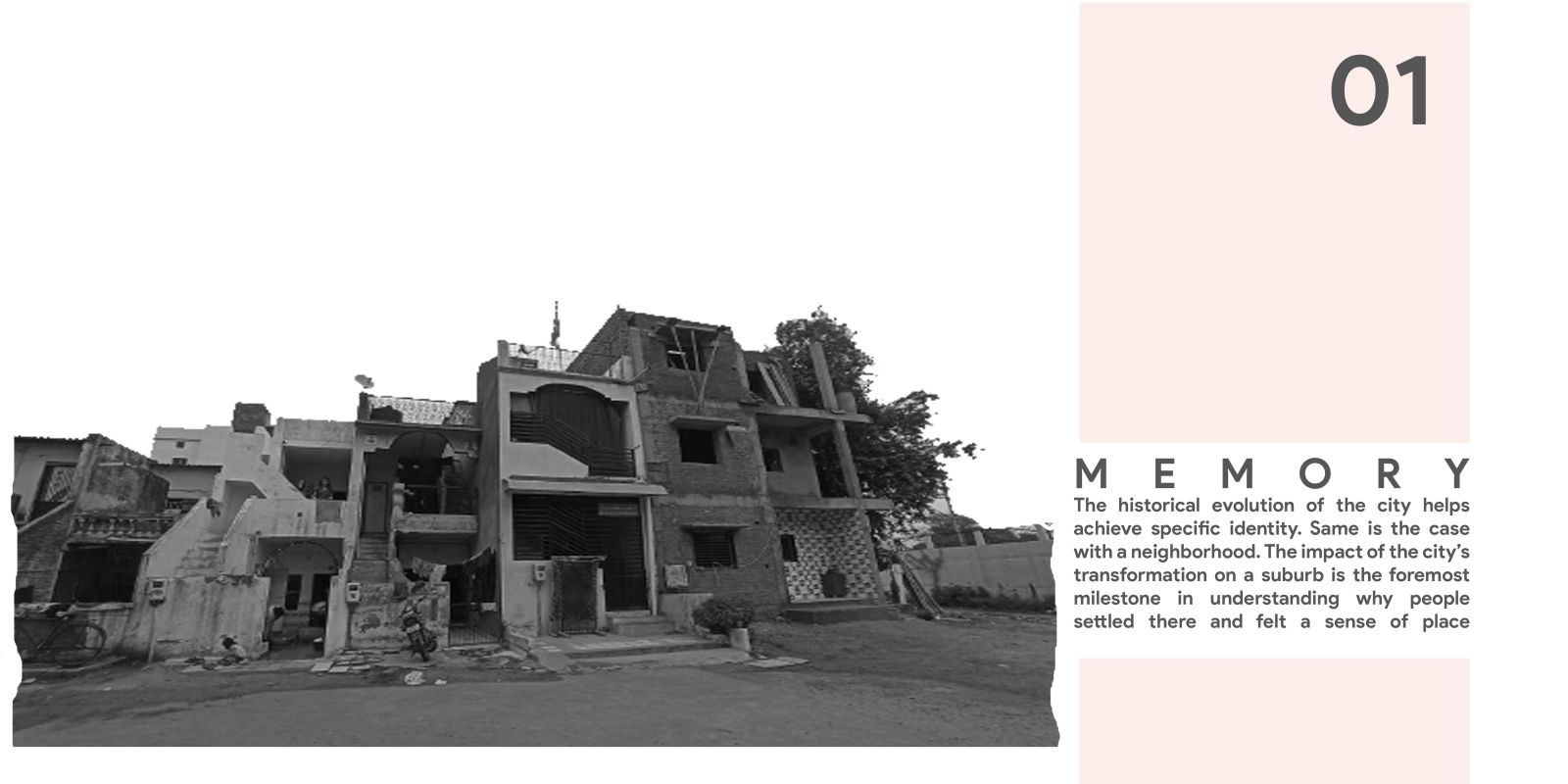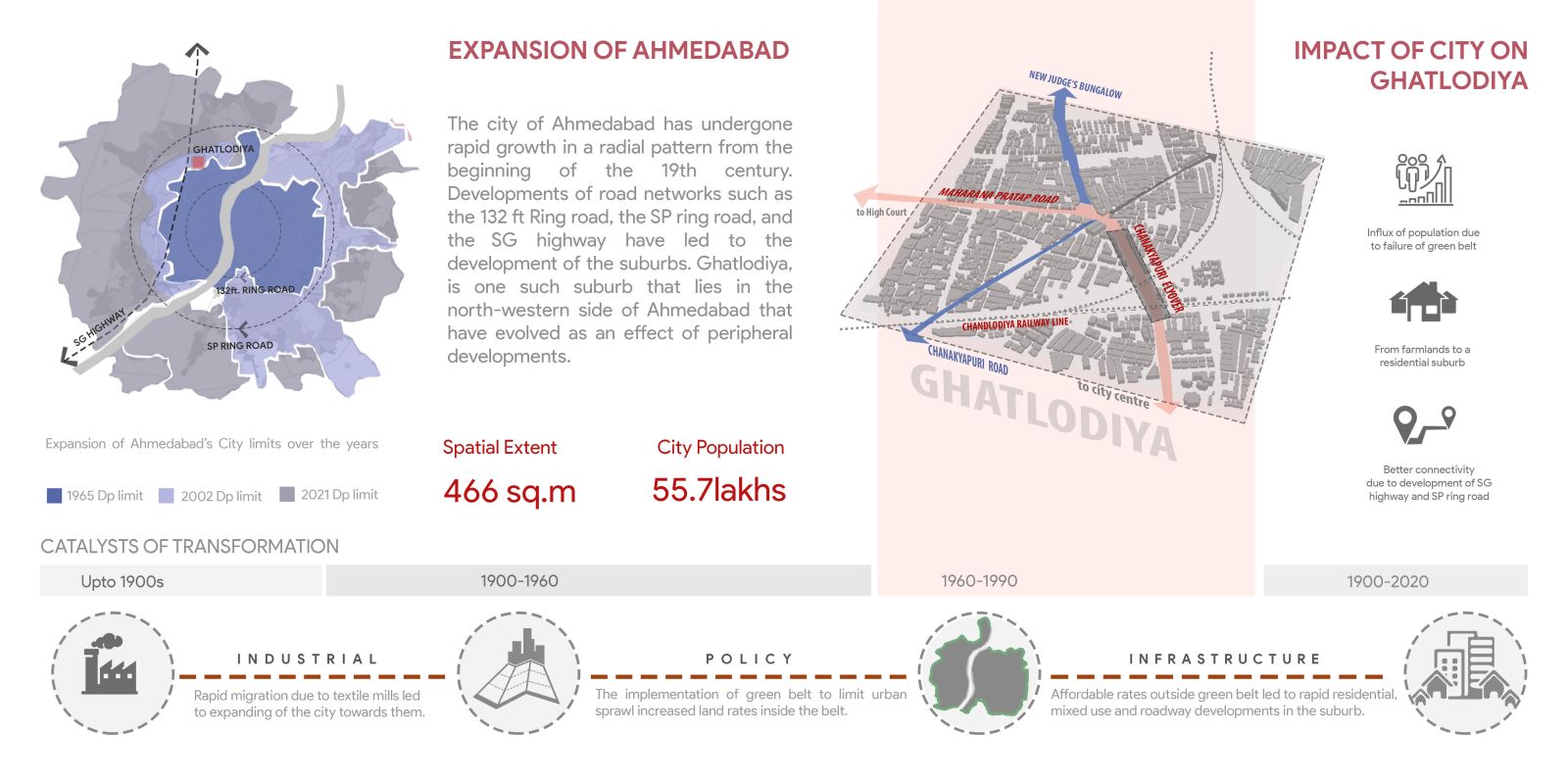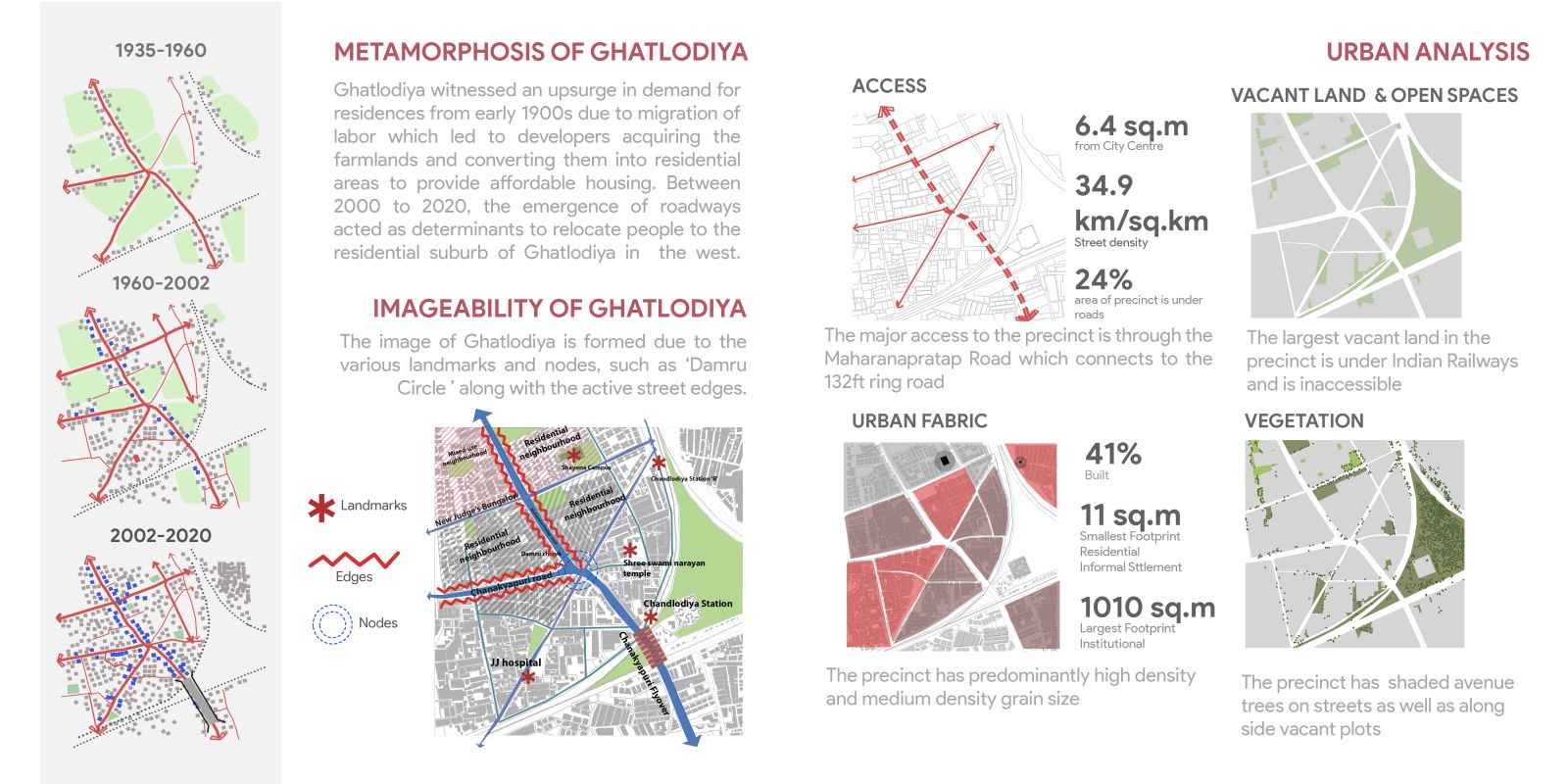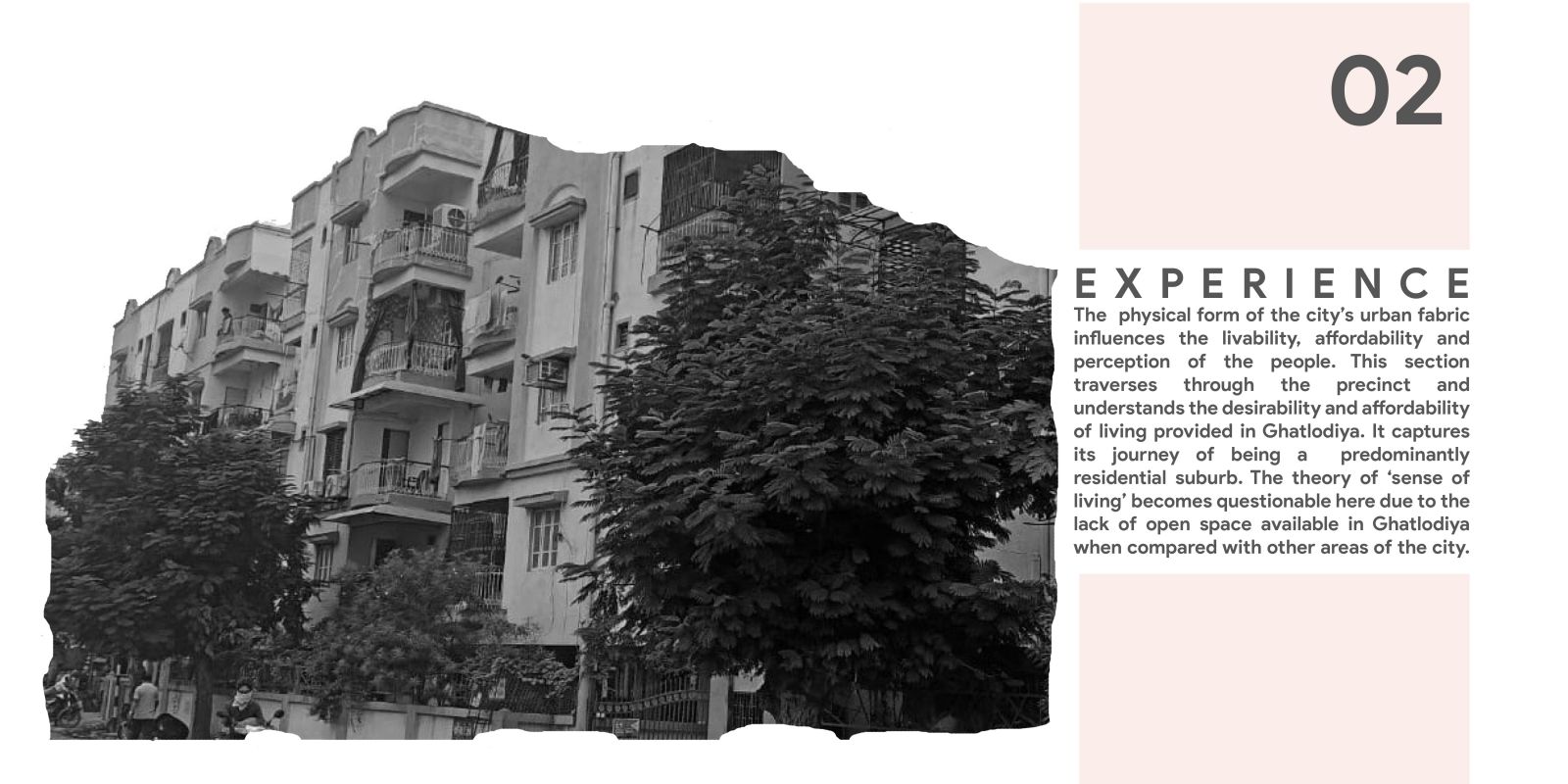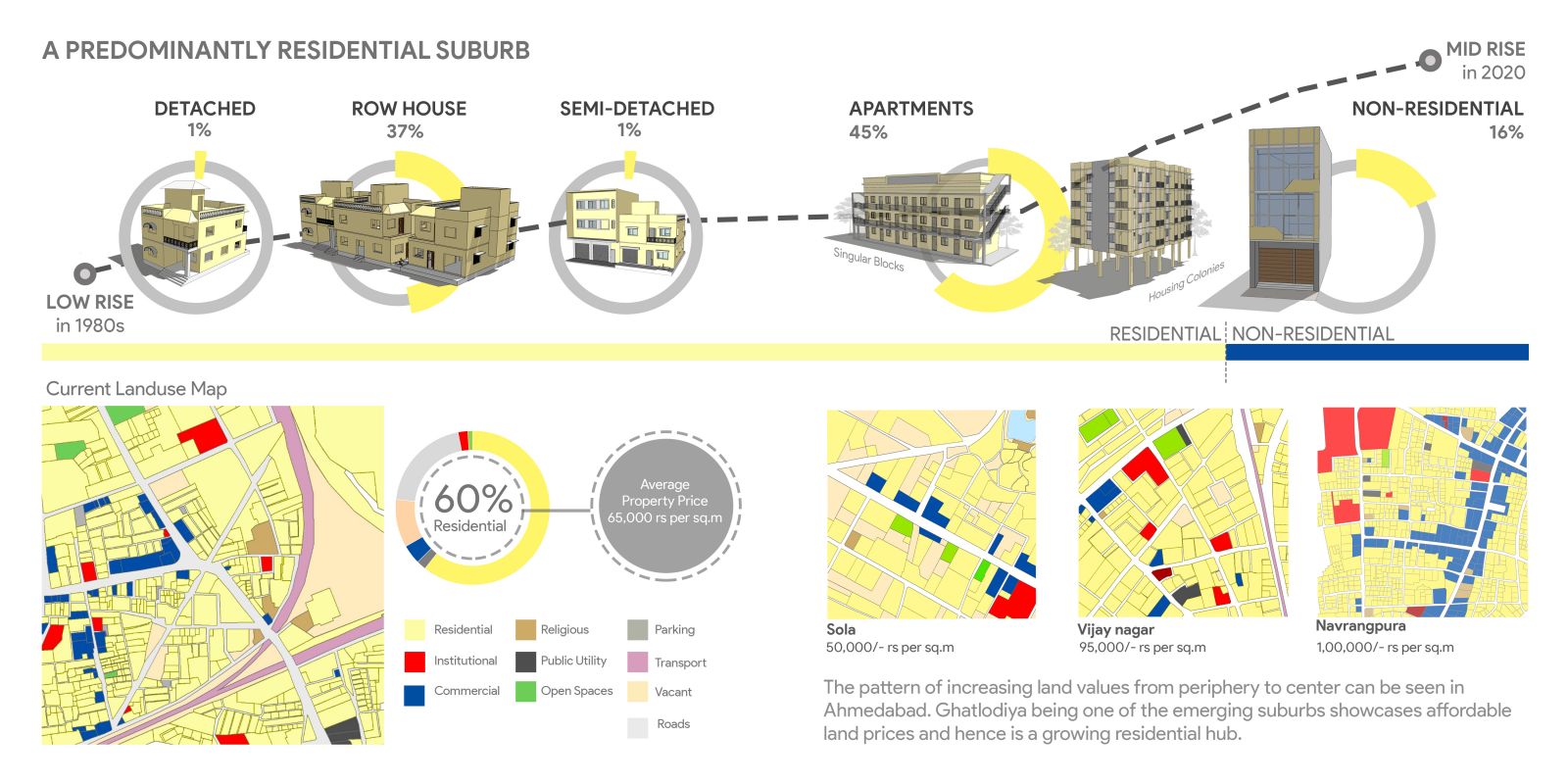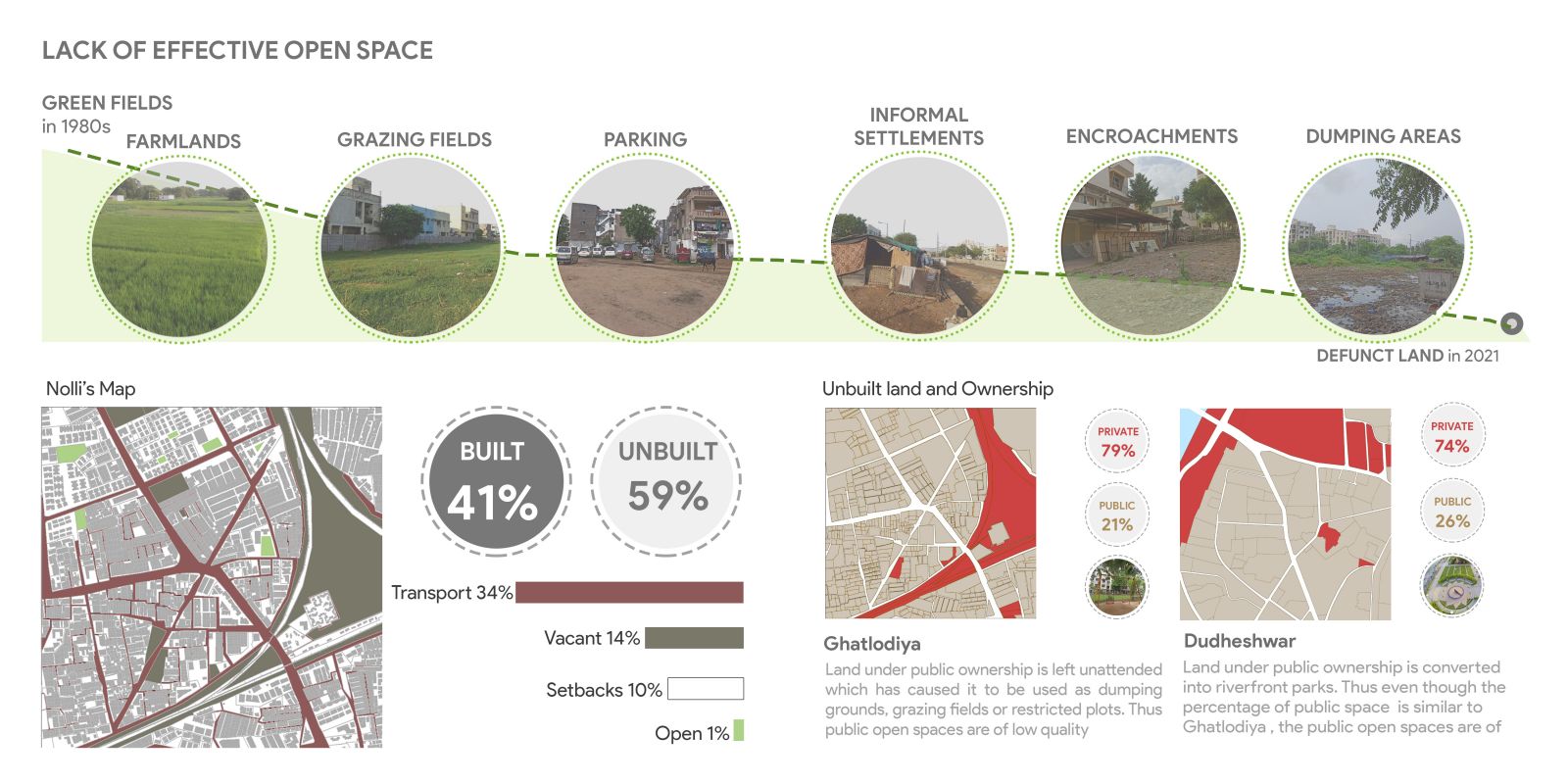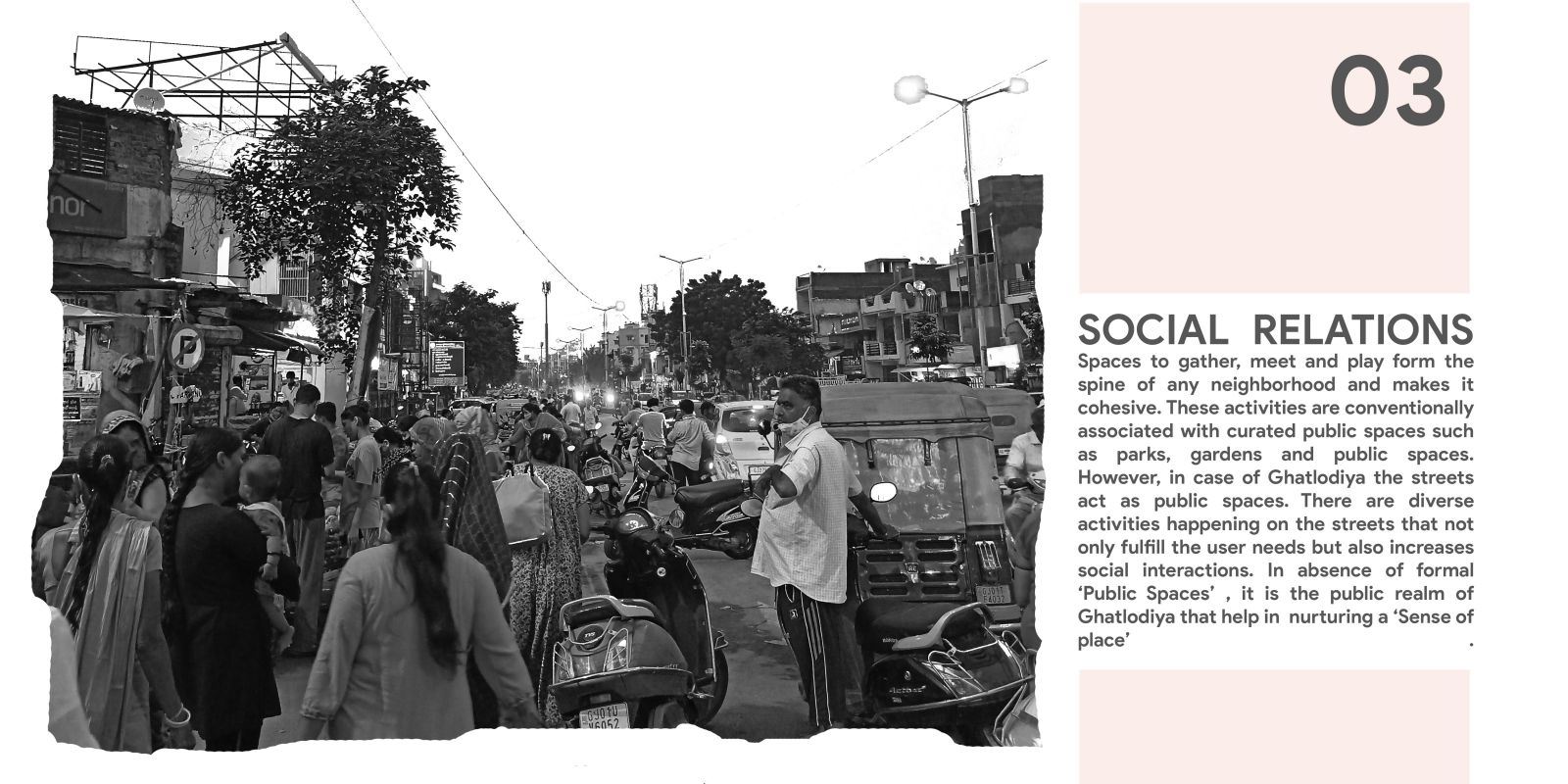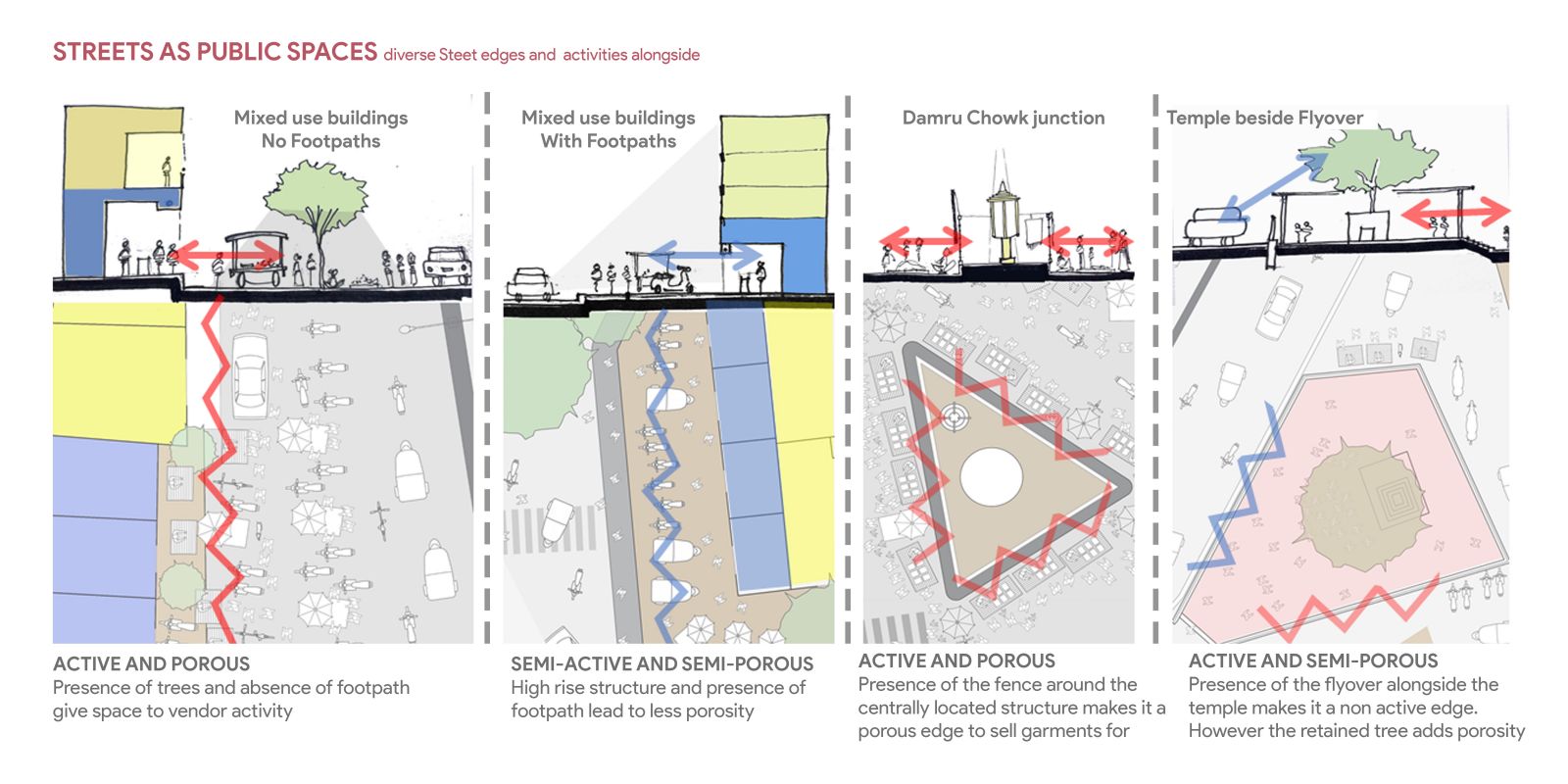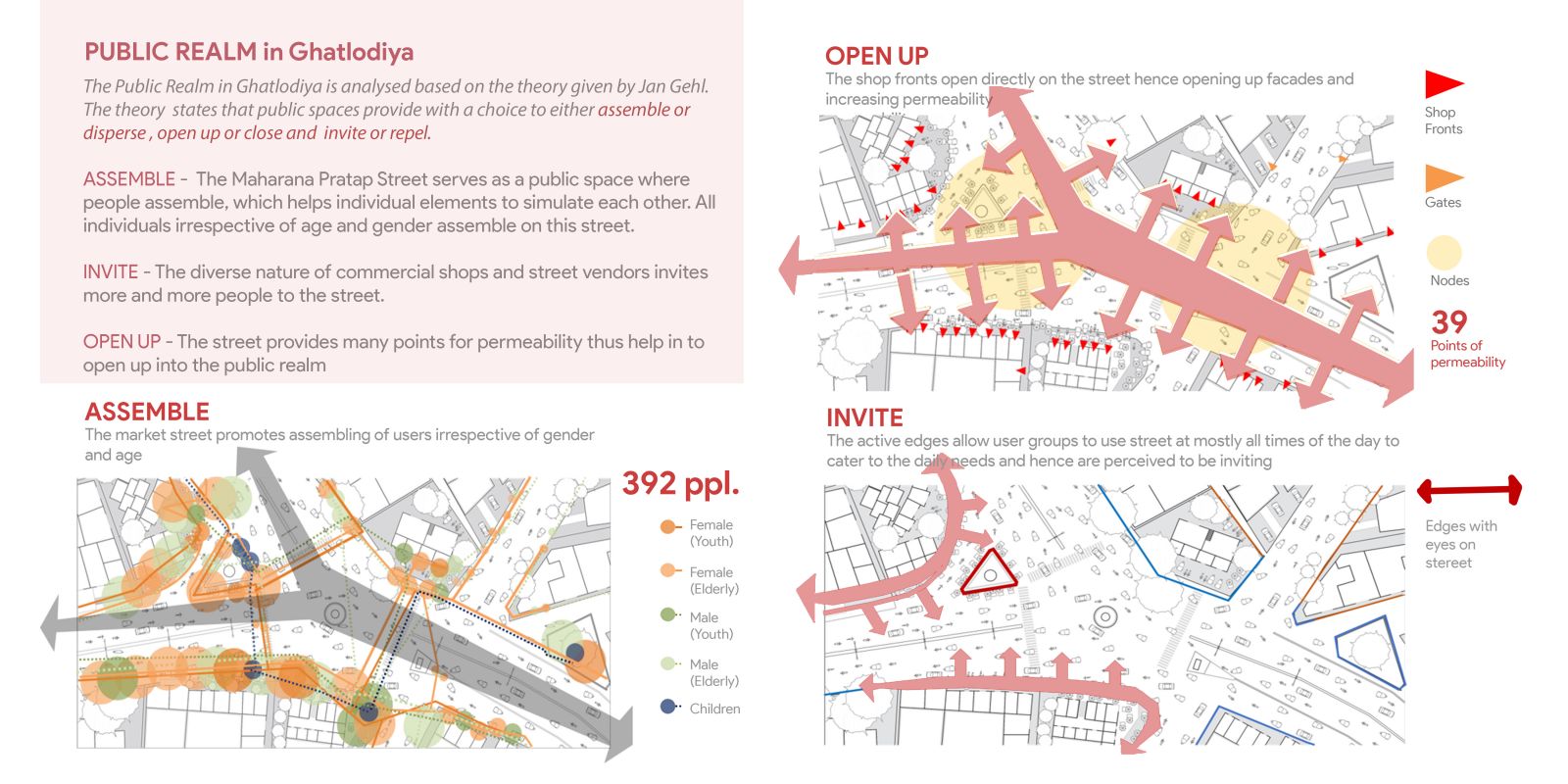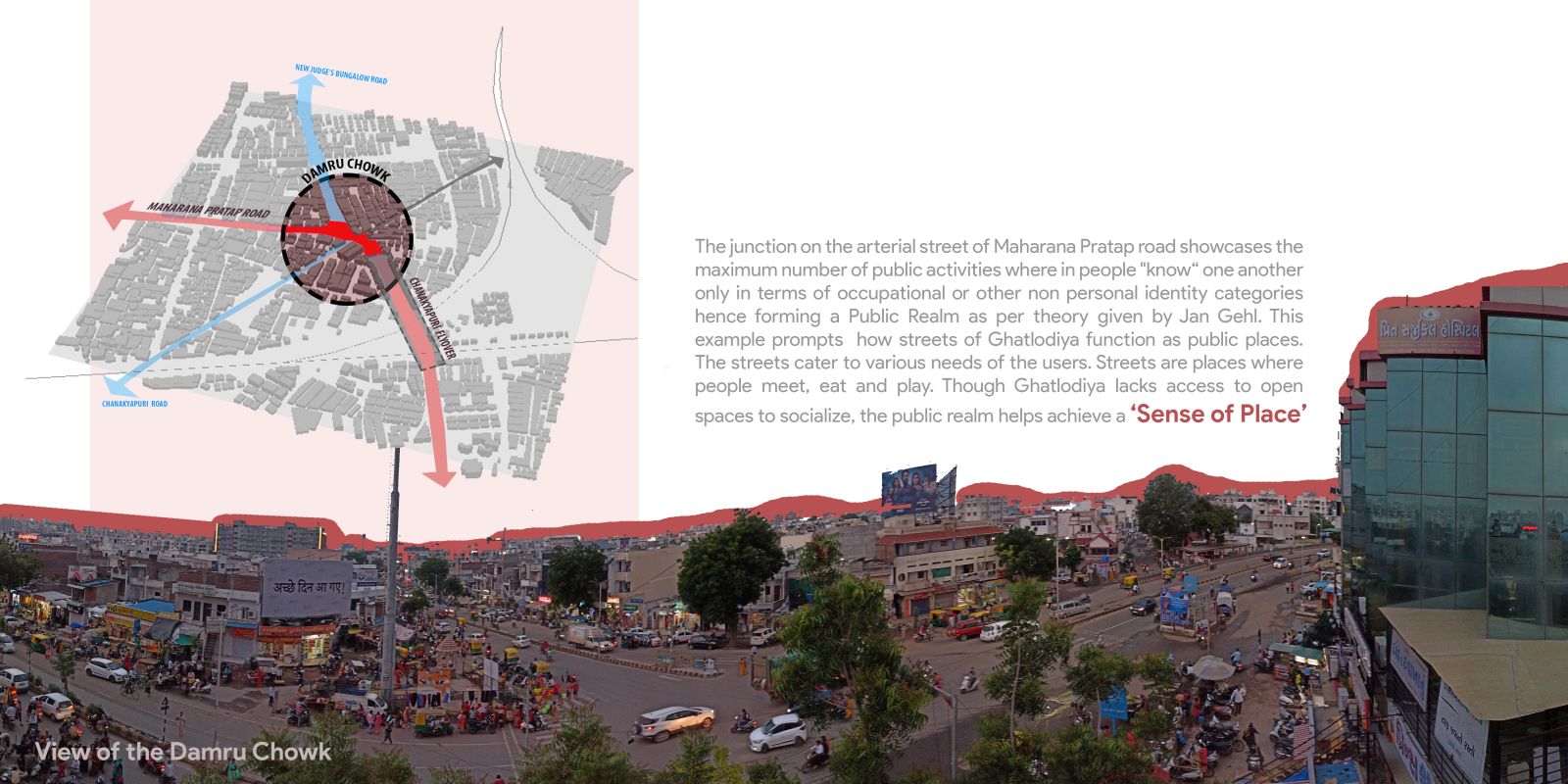Your browser is out-of-date!
For a richer surfing experience on our website, please update your browser. Update my browser now!
For a richer surfing experience on our website, please update your browser. Update my browser now!
When cities evolve they start to transform and attract more people. The built as well as the unbuilt helps shape a city. People start building association with their neighborhood. All of this leads to achieving a 'sense of place' to the people. The portfolio tries to decode this aspect for Ghatlodiya, a growing residential suburb in western Ahmedabad. The area is analyzed through the three elements of this theory namely memory, experience and social relations. The history, built form and public realm is elaborated though the lens of 'sense of Place' for better understanding of the city and the suburb.
